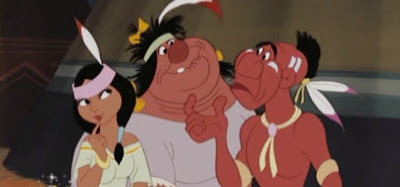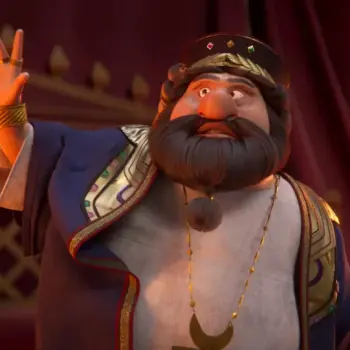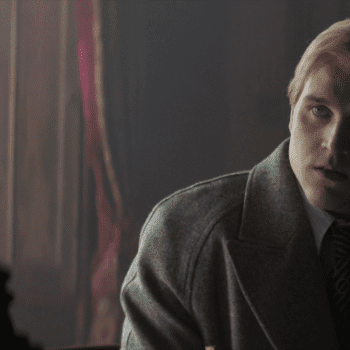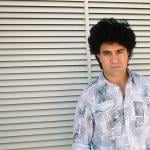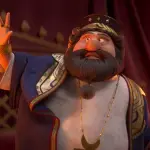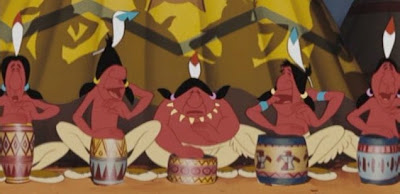
The twins have really fallen in love with The Many Adventures of Winnie the Pooh (1977) over the last few weeks. They sing along to the movie, they raise and lower their arms along with Pooh’s exercise regimen at the beginning of the film, and Thomas in particular even recites the dialogue along with the film, sort of; he doesn’t know most of the words yet, but he does make phonetic sounds that approximate the words spoken by the characters, and he does this in near-perfect sync with the rhythms and cadences of the film.
So familiar have they become with the film, in fact, and so often do they watch it, that the wife and I have begun to itch for opportunities to introduce them to other films. Among other things, we are seriously considering getting some of the sequels to Winnie the Pooh — the theatrical ones, not the straight-to-DVD ones — so that we can stick with these characters while introducing some fresher stories into the mix. Have we given into Disney’s evil scheme, whereby the studio makes a quick buck by churning out cheap knock-offs of its proven hits? Well, maybe, but I do think at least a few of those sequels are interesting in their own right; click here for a glimpse of the theological hay I made of The Tigger Movie (2000) way back when.
But we haven’t actually acquired any of those sequels yet. First, we turned to our existing library — and we settled on Peter Pan (1953). I’m not a particularly big fan of this film myself, but I thought it would be relatively innocent, compared to some of the darker and more intense Disney movies, so we popped it in the player — and then came all the stuff about the Native Americans, who are depicted in somewhat broad and unflattering caricature, even more so than the pirates and the mermaids. Now, I have never thought of myself as a particularly politically correct kind of guy, but seeing my kids watch this film as the characters sang ‘What Makes the Red Man Red?‘, I did get qualms.
Of course, at least two of the Indians escape racial caricature, at least of the more extreme sort. One of them is Tiger Lily, the sexy young thing who is one of the many girls and women competing for Peter Pan’s attention. The other is a girl, briefly seen, who is virtually identical to Tiger Lily but is apparently attached to a different man — and she has a mother who happens to fit the stereotype of the ugly and overbearing mother-in-law that was a staple of 1950s humour. So that’s another thing that rubs my modern sensibilities the wrong way.
So now my kids are equally addicted to Pooh and Pan, and I’m hoping I can wean them off of Pan in the near future, so that they can get used to other kinds of stories and images for a while, and then, down the road somewhere, when they’re older and have more of a “context” for this sort of thing, maybe we can reintroduce them to Peter Pan.
In the meantime, and jumping topics somewhat, I have found myself thinking lately that the characters in Winnie the Pooh don’t have the most creative or imaginative of names. Winnie and Eeyore at least sound like proper names, but Rabbit, Piglet and Owl seem to be mere labels, rather than names; Kanga and Roo are in a similar though not quite identical situation, and Tigger is saved from mere-label-ness simply because of an error in spelling.
I don’t necessarily mind all this, but I do find myself wondering if my children will be confused when they read other stories with rabbits named Rabbit and owls named Owl, etc. Are these the same characters? Is it possible for different people in different imaginative worlds to have the same name? Can the same name signify different people and thus different personalities and maybe even different meanings? What if one story’s Piglet is good while the other story’s Piglet is evil? And so on, and so on.
In the midst of these musings, I came across this item by David Robinson on the “meta-ness” of Bolt, a Disney cartoon formerly known as American Dog that is coming out later this year. And he tells a fascinating anecdote about Sesame Street and Big Bird that kind of ties into what I’ve been pondering:
If you’ve read The Tipping Point (and you have… c’mon…. admit it), you may recall a related vignette about a certain episode of Sesame Street, in which Big Bird searches for a new name. The plot of the episode was fun for adults—-Big Bird, in a moment of existential ennui, concludes that his name is oddly functional and lacking in character, and spends the rest of the episode looking for a new one. But the story was confusing to young children, who speed up their learning about the world by assuming (usually correctly) that the things they encounter have one consistent name apiece. The layering was overkill. It makes for an interesting vignette because most of us have long since forgotten what it would be like to lack layers, to view the world as a simple place where the distance between things-as-they-are and things-as-described doesn’t hold a lot of inherent interest.
The rest of Robinson’s thoughts, on Bolt etc., are interesting too. But I like what he has to say here about the world having and lacking layers, depending on one’s age. In this context, I guess it’s not such a bad thing after all if the rabbits are named Rabbit, and so on. They need to learn what a rabbit is, period, before they can start telling rabbits apart — just as they need to learn that not all bears are named Pooh, no matter how many times my daughter might say “Pooh!” while pointing to one of her teddy bears.


